Tianze Yang
From Task-Specific Models to Unified Systems: A Review of Model Merging Approaches
Mar 12, 2025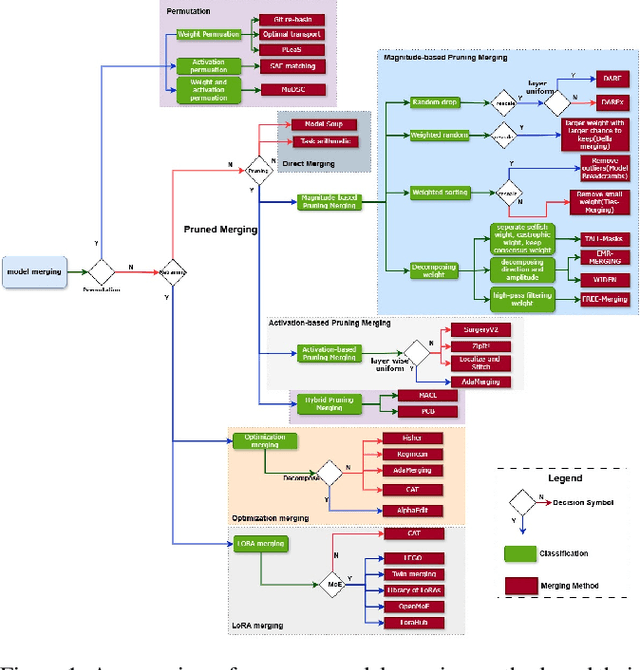
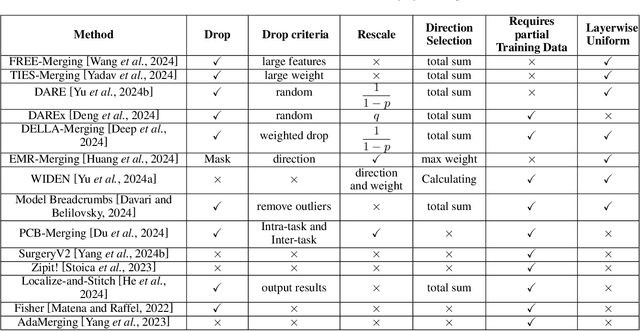
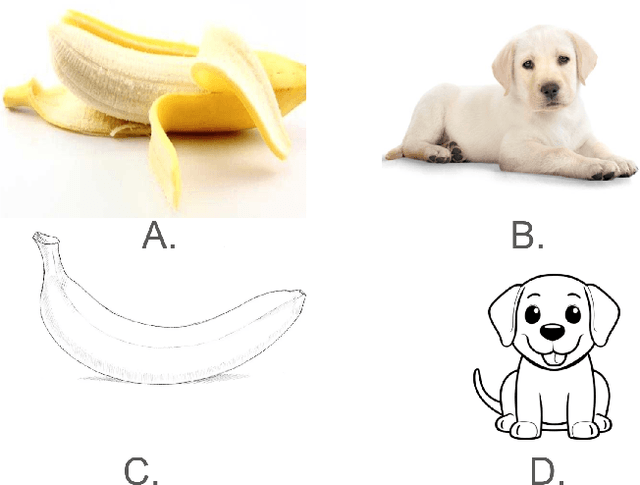
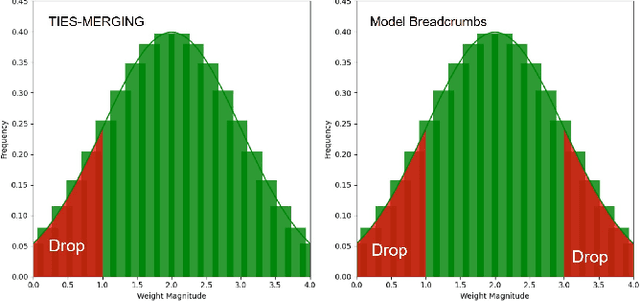
Abstract:Model merging has achieved significant success, with numerous innovative methods proposed to enhance capabilities by combining multiple models. However, challenges persist due to the lack of a unified framework for classification and systematic comparative analysis, leading to inconsistencies in terminologies and categorizations. Meanwhile, as an increasing number of fine-tuned models are publicly available, their original training data often remain inaccessible due to privacy concerns or intellectual property restrictions. This makes traditional multi-task learning based on shared training data impractical. In scenarios where direct access to training data is infeasible, merging model parameters to create a unified model with broad generalization across multiple domains becomes crucial, further underscoring the importance of model merging techniques. Despite the rapid progress in this field, a comprehensive taxonomy and survey summarizing recent advances and predicting future directions are still lacking. This paper addresses these gaps by establishing a new taxonomy of model merging methods, systematically comparing different approaches, and providing an overview of key developments. By offering a structured perspective on this evolving area, we aim to help newcomers quickly grasp the field's landscape and inspire further innovations.
SearchRAG: Can Search Engines Be Helpful for LLM-based Medical Question Answering?
Feb 18, 2025Abstract:Large Language Models (LLMs) have shown remarkable capabilities in general domains but often struggle with tasks requiring specialized knowledge. Conventional Retrieval-Augmented Generation (RAG) techniques typically retrieve external information from static knowledge bases, which can be outdated or incomplete, missing fine-grained clinical details essential for accurate medical question answering. In this work, we propose SearchRAG, a novel framework that overcomes these limitations by leveraging real-time search engines. Our method employs synthetic query generation to convert complex medical questions into search-engine-friendly queries and utilizes uncertainty-based knowledge selection to filter and incorporate the most relevant and informative medical knowledge into the LLM's input. Experimental results demonstrate that our method significantly improves response accuracy in medical question answering tasks, particularly for complex questions requiring detailed and up-to-date knowledge.
Large Language Models for Manufacturing
Oct 28, 2024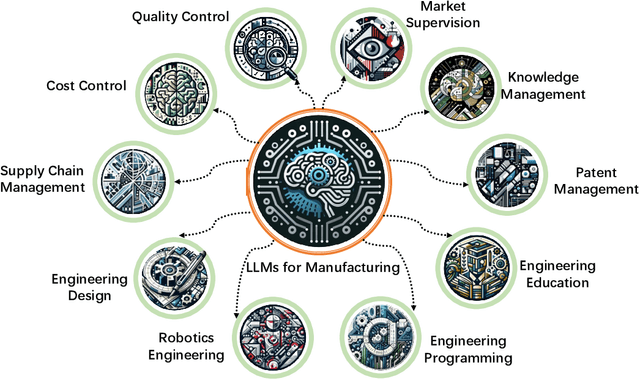

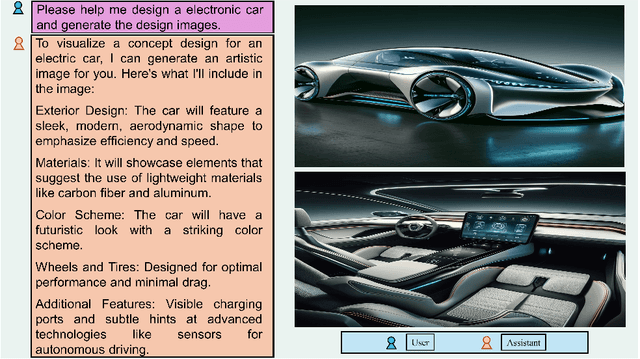

Abstract:The rapid advances in Large Language Models (LLMs) have the potential to transform manufacturing industry, offering new opportunities to optimize processes, improve efficiency, and drive innovation. This paper provides a comprehensive exploration of the integration of LLMs into the manufacturing domain, focusing on their potential to automate and enhance various aspects of manufacturing, from product design and development to quality control, supply chain optimization, and talent management. Through extensive evaluations across multiple manufacturing tasks, we demonstrate the remarkable capabilities of state-of-the-art LLMs, such as GPT-4V, in understanding and executing complex instructions, extracting valuable insights from vast amounts of data, and facilitating knowledge sharing. We also delve into the transformative potential of LLMs in reshaping manufacturing education, automating coding processes, enhancing robot control systems, and enabling the creation of immersive, data-rich virtual environments through the industrial metaverse. By highlighting the practical applications and emerging use cases of LLMs in manufacturing, this paper aims to provide a valuable resource for professionals, researchers, and decision-makers seeking to harness the power of these technologies to address real-world challenges, drive operational excellence, and unlock sustainable growth in an increasingly competitive landscape.
ECHOPulse: ECG controlled echocardio-grams video generation
Oct 04, 2024



Abstract:Echocardiography (ECHO) is essential for cardiac assessments, but its video quality and interpretation heavily relies on manual expertise, leading to inconsistent results from clinical and portable devices. ECHO video generation offers a solution by improving automated monitoring through synthetic data and generating high-quality videos from routine health data. However, existing models often face high computational costs, slow inference, and rely on complex conditional prompts that require experts' annotations. To address these challenges, we propose ECHOPULSE, an ECG-conditioned ECHO video generation model. ECHOPULSE introduces two key advancements: (1) it accelerates ECHO video generation by leveraging VQ-VAE tokenization and masked visual token modeling for fast decoding, and (2) it conditions on readily accessible ECG signals, which are highly coherent with ECHO videos, bypassing complex conditional prompts. To the best of our knowledge, this is the first work to use time-series prompts like ECG signals for ECHO video generation. ECHOPULSE not only enables controllable synthetic ECHO data generation but also provides updated cardiac function information for disease monitoring and prediction beyond ECG alone. Evaluations on three public and private datasets demonstrate state-of-the-art performance in ECHO video generation across both qualitative and quantitative measures. Additionally, ECHOPULSE can be easily generalized to other modality generation tasks, such as cardiac MRI, fMRI, and 3D CT generation. Demo can seen from \url{https://github.com/levyisthebest/ECHOPulse_Prelease}.
ALDM-Grasping: Diffusion-aided Zero-Shot Sim-to-Real Transfer for Robot Grasping
Mar 18, 2024



Abstract:To tackle the "reality gap" encountered in Sim-to-Real transfer, this study proposes a diffusion-based framework that minimizes inconsistencies in grasping actions between the simulation settings and realistic environments. The process begins by training an adversarial supervision layout-to-image diffusion model(ALDM). Then, leverage the ALDM approach to enhance the simulation environment, rendering it with photorealistic fidelity, thereby optimizing robotic grasp task training. Experimental results indicate this framework outperforms existing models in both success rates and adaptability to new environments through improvements in the accuracy and reliability of visual grasping actions under a variety of conditions. Specifically, it achieves a 75\% success rate in grasping tasks under plain backgrounds and maintains a 65\% success rate in more complex scenarios. This performance demonstrates this framework excels at generating controlled image content based on text descriptions, identifying object grasp points, and demonstrating zero-shot learning in complex, unseen scenarios.
ICE-SEARCH: A Language Model-Driven Feature Selection Approach
Mar 09, 2024



Abstract:This study unveils the In-Context Evolutionary Search (ICE-SEARCH) method, the first work that melds language models (LMs) with evolutionary algorithms for feature selection (FS) tasks and demonstrates its effectiveness in Medical Predictive Analytics (MPA) applications. ICE-SEARCH harnesses the crossover and mutation capabilities inherent in LMs within an evolutionary framework, significantly improving FS through the model's comprehensive world knowledge and its adaptability to a variety of roles. Our evaluation of this methodology spans three crucial MPA tasks: stroke, cardiovascular disease, and diabetes, where ICE-SEARCH outperforms traditional FS methods in pinpointing essential features for medical applications. ICE-SEARCH achieves State-of-the-Art (SOTA) performance in stroke prediction and diabetes prediction; the Decision-Randomized ICE-SEARCH ranks as SOTA in cardiovascular disease prediction. Our results not only demonstrate the efficacy of ICE-SEARCH in medical FS but also underscore the versatility, efficiency, and scalability of integrating LMs in FS tasks. The study emphasizes the critical role of incorporating domain-specific insights, illustrating ICE-SEARCH's robustness, generalizability, and swift convergence. This opens avenues for further research into comprehensive and intricate FS landscapes, marking a significant stride in the application of artificial intelligence in medical predictive analytics.
Revolutionizing Finance with LLMs: An Overview of Applications and Insights
Jan 22, 2024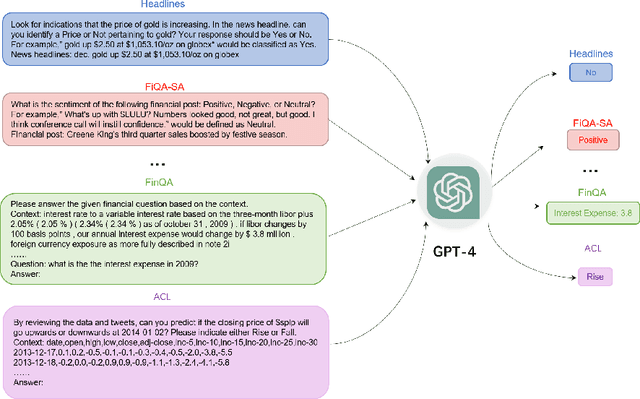

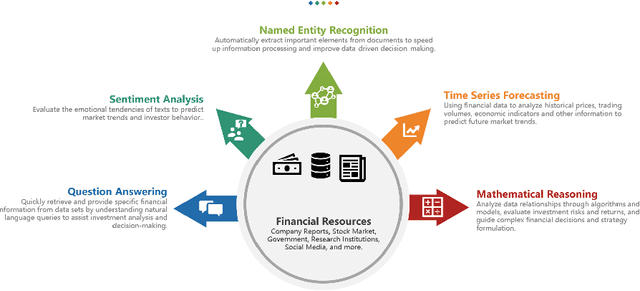
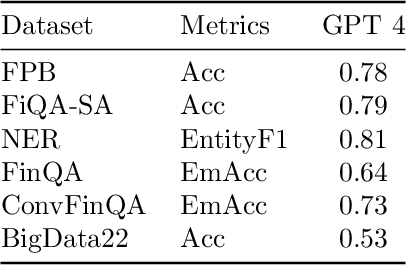
Abstract:In recent years, Large Language Models (LLMs) like ChatGPT have seen considerable advancements and have been applied in diverse fields. Built on the Transformer architecture, these models are trained on extensive datasets, enabling them to understand and generate human language effectively. In the financial domain, the deployment of LLMs is gaining momentum. These models are being utilized for automating financial report generation, forecasting market trends, analyzing investor sentiment, and offering personalized financial advice. Leveraging their natural language processing capabilities, LLMs can distill key insights from vast financial data, aiding institutions in making informed investment choices and enhancing both operational efficiency and customer satisfaction. In this study, we provide a comprehensive overview of the emerging integration of LLMs into various financial tasks. Additionally, we conducted holistic tests on multiple financial tasks through the combination of natural language instructions. Our findings show that GPT-4 effectively follow prompt instructions across various financial tasks. This survey and evaluation of LLMs in the financial domain aim to deepen the understanding of LLMs' current role in finance for both financial practitioners and LLM researchers, identify new research and application prospects, and highlight how these technologies can be leveraged to solve practical challenges in the finance industry.
Transformation vs Tradition: Artificial General Intelligence (AGI) for Arts and Humanities
Oct 30, 2023
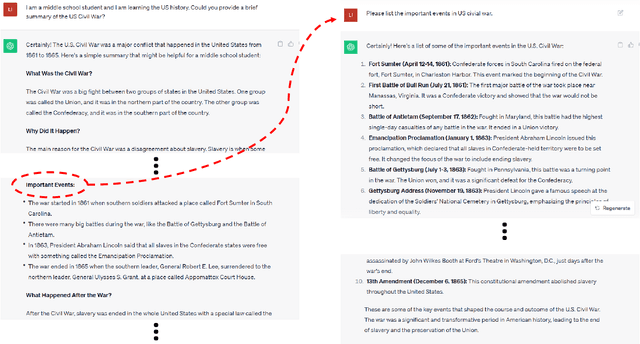

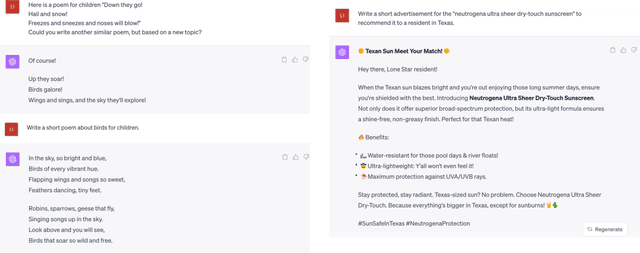
Abstract:Recent advances in artificial general intelligence (AGI), particularly large language models and creative image generation systems have demonstrated impressive capabilities on diverse tasks spanning the arts and humanities. However, the swift evolution of AGI has also raised critical questions about its responsible deployment in these culturally significant domains traditionally seen as profoundly human. This paper provides a comprehensive analysis of the applications and implications of AGI for text, graphics, audio, and video pertaining to arts and the humanities. We survey cutting-edge systems and their usage in areas ranging from poetry to history, marketing to film, and communication to classical art. We outline substantial concerns pertaining to factuality, toxicity, biases, and public safety in AGI systems, and propose mitigation strategies. The paper argues for multi-stakeholder collaboration to ensure AGI promotes creativity, knowledge, and cultural values without undermining truth or human dignity. Our timely contribution summarizes a rapidly developing field, highlighting promising directions while advocating for responsible progress centering on human flourishing. The analysis lays the groundwork for further research on aligning AGI's technological capacities with enduring social goods.
ALPHA: Attention-based Long-horizon Pathfinding in Highly-structured Areas
Oct 12, 2023Abstract:The multi-agent pathfinding (MAPF) problem seeks collision-free paths for a team of agents from their current positions to their pre-set goals in a known environment, and is an essential problem found at the core of many logistics, transportation, and general robotics applications. Existing learning-based MAPF approaches typically only let each agent make decisions based on a limited field-of-view (FOV) around its position, as a natural means to fix the input dimensions of its policy network. However, this often makes policies short-sighted, since agents lack the ability to perceive and plan for obstacles/agents beyond their FOV. To address this challenge, we propose ALPHA, a new framework combining the use of ground truth proximal (local) information and fuzzy distal (global) information to let agents sequence local decisions based on the full current state of the system, and avoid such myopicity. We further allow agents to make short-term predictions about each others' paths, as a means to reason about each others' path intentions, thereby enhancing the level of cooperation among agents at the whole system level. Our neural structure relies on a Graph Transformer architecture to allow agents to selectively combine these different sources of information and reason about their inter-dependencies at different spatial scales. Our simulation experiments demonstrate that ALPHA outperforms both globally-guided MAPF solvers and communication-learning based ones, showcasing its potential towards scalability in realistic deployments.
Intent-based Deep Reinforcement Learning for Multi-agent Informative Path Planning
Mar 09, 2023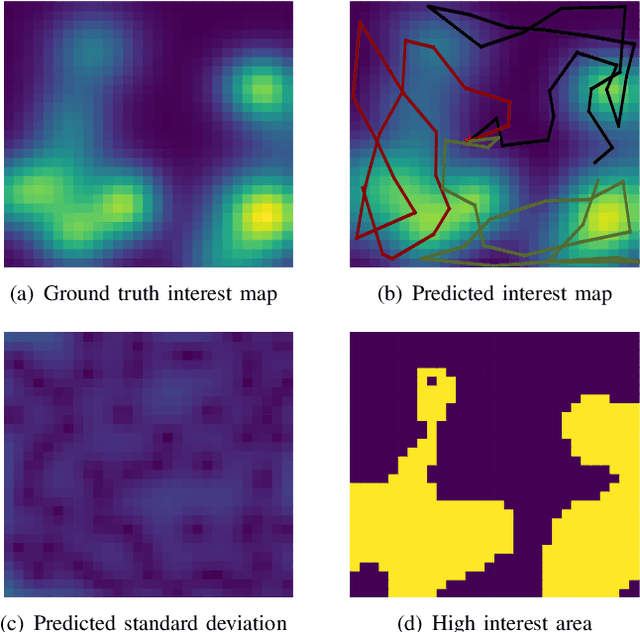
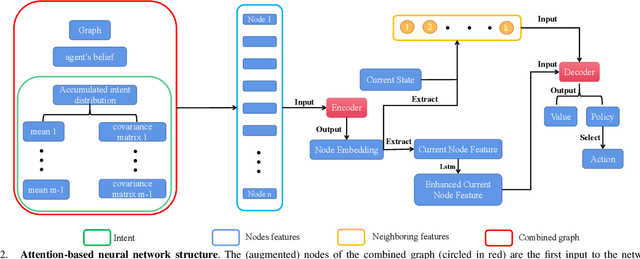
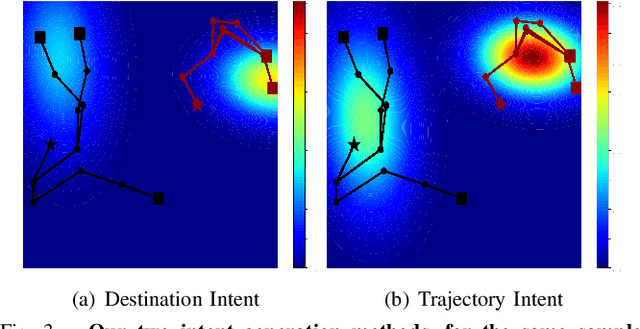

Abstract:In multi-agent informative path planning (MAIPP), agents must collectively construct a global belief map of an underlying distribution of interest (e.g., gas concentration, light intensity, or pollution levels) over a given domain, based on measurements taken along their trajectory. They must frequently replan their path to balance the distributed exploration of new areas and the collective, meticulous exploitation of known high-interest areas, to maximize the information gained within a predefined budget (e.g., path length or working time). A common approach to achieving such cooperation relies on planning the agents' paths reactively, conditioned on other agents' future actions. However, as the agent's belief is updated continuously, these predicted future actions may not end up being the ones executed by agents, introducing a form of noise/inaccuracy in the system and often decreasing performance. In this work, we propose a decentralized deep reinforcement learning (DRL) approach to MAIPP, which relies on an attention-based neural network, where agents optimize long-term individual and cooperative objectives by explicitly sharing their intent (i.e., medium-/long-term future positions distribution, obtained from their individual policy) in a reactive, asynchronous manner. That is, in our work, intent sharing allows agents to learn to claim/avoid broader areas of the world. Moreover, since our approach relies on learned attention over these shared intents, agents are able to learn to recognize the useful portion(s) of these (imperfect) predictions to maximize cooperation even in the presence of imperfect information. Our comparison experiments demonstrate the performance of our approach compared to its variants and high-quality baselines over a large set of MAIPP simulations.
 Add to Chrome
Add to Chrome Add to Firefox
Add to Firefox Add to Edge
Add to Edge